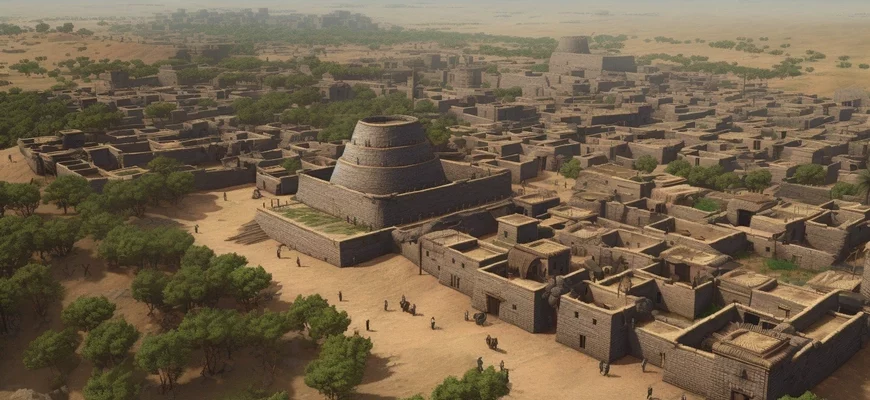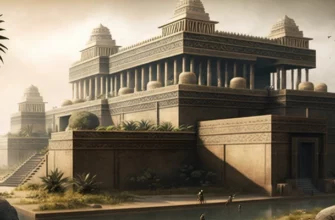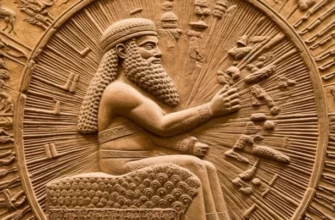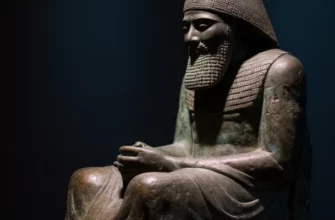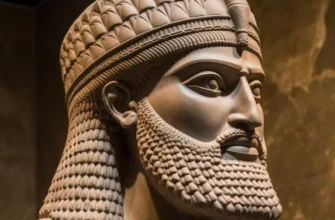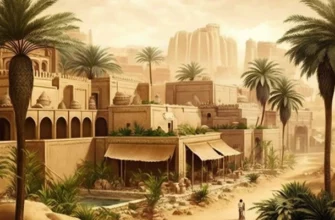Babylonia was an ancient city on the Euphrates River that became a great empire. In the 12th-17th centuries BC, Babylonia was ruled by dynasties such as Hammurabi, Kassite, and Elam. Society had a defined class structure, and religion and culture played an important role. The economy was based on agriculture and trade. The Babylonian king Hammurabi is known for his code of laws, which contained more than 280 articles. Babylonia remains an important historical site to this day.
- Political history of Babylonia in the 12th-17th centuries BC
- Hammurabi Dynasty
- The Kassite Dynasty
- Kasite Dynasty II
- The Elamite Dynasty
- Social history of Babylonia in the 12th-17th centuries BC
- Class structure of society
- Religion and culture of Babylonia
- The economic history of Babylonia in the 12th-17th centuries BC
- Agriculture and trade
- Urban economy and crafts
- Conclusions
Political history of Babylonia in the 12th-17th centuries BC
In the 12th-17th centuries BC, Babylonia was ruled by the Hammurabi, Kassite, and Elamite dynasties. The Hammurabi dynasty is known for its legislation, which united and organized the empire. The Kassite dynasty survived a period of decline and rose to power again. The Elamite dynasty, consisting of Elamite conquerors, ruled Babylonia at the end of the 15th century BC. After that, the city was conquered by the Amorites and Assyria. The political history of Babylonia reflects constant changes in power and alliances between neighboring states.
Hammurabi Dynasty
The Hammurabi dynasty was one of the ancient dynasties of Babylonia, which ruled from approximately 1792 to 1750 BC. Its most famous ruler was Hammurabi, who became the founder of the empire and established his authority by creating a collection of laws – the Code of Hammurabi. This code contained more than 280 laws and regulated almost all areas of life in ancient Babylon. The Hammurabi dynasty coped well with its neighbors, but after Hammurabi, the empire began to decline over the following centuries. Achievements in mathematics, literature, and religion also made the Hammurabi dynasty one of the most significant in the history of Babylonia.
The Kassite Dynasty
The Kassite Dynasty ruled Babylonia from approximately 1595 to 1155 BC. During its reign, the empire experienced a period of decline but then rose to power again. The Kassite Dynasty is considered the first dynasty of Babylon that was able to create a centralized state. It also made a significant contribution to the development of the culture and art of ancient Babylon. During the reign of the Kassite dynasty, many important events took place, such as wars with Assyria and Mitanni, as well as the construction of palaces and temples. Overall, the Kassite dynasty had a significant impact on the history of Babylon and the ancient East.
Kasite Dynasty II
The Kasite Dynasty II, also known as the Second Dynasty of Isin, ruled Babylonia from approximately 1155 to 1026 BC. This dynasty was the successor to the Kasite Dynasty, but its rulers did not have the same influence on the empire as their predecessors. During their reign, Babylonia experienced internal conflicts and military conflicts with neighboring states such as Elam and Assyria. Despite this, the Second Dynasty of Isin left a significant legacy in culture and art, particularly in architecture, literature, and religion. The cultural achievements of the Kassite Dynasty II remained important for the further development of ancient Babylon and the East as a whole.
The Elamite Dynasty
The Elamite Dynasty was a dynasty that ruled Babylonia from 1155 to 1025 BC. It got its name from Elam, a powerful state located in what is now Iran. During its reign, Babylonia experienced a period of political and economic instability, as well as wars with Assyria. Historians note that the Elamite dynasty, despite its achievements in the cultural and artistic spheres, was unable to solve the problems of Babylonia, which led to its further decline. At the same time, this dynasty left a significant mark on the history of Babylon, particularly in architecture, art, and religion.
Social history of Babylonia in the 12th-17th centuries BC
During the 12th-17th centuries BC, Babylonia was one of the most significant civilizations in Mesopotamia. Babylonia was a class society, with two classes being the most important: the high priest and the king.
During this period, several important events took place in the social history of Babylonia. For example, in the 13th century BC, the ruler Hammurabi created a legal system known as the “Code of Hammurabi,” which set standards for all aspects of life, from criminal justice to marriage law.
In the 15th century BC, Babylonia was invaded by the Elamites, which led to some social changes. For example, the influence of the high priesthood grew, and it became the main defender of Babylonia against external enemies. This led to the development of culture and faith, and to an increase in the number of religious shrines.
In the 16th century BC, power in Babylonia was seized by the Kassites, who ruled the country for almost a century. This led to a decrease in the influence of the high priesthood and an increase in the influence of the king.
In the 17th century BC, Babylonia became part of the Hittite Empire. This led to changes in culture and trade, as the Hittites ensured stability and prosperity in the region. However, relations between Babylonia and the Hittites deteriorated at the end of the 17th century BC, leading to some social changes and decentralization of power.
All these events were reflected in the social history of Babylonia. The Code of Hammurabi, which became the most famous legislative act of Babylonia, established standards of justice that were used for many centuries. Also during this period, many religious shrines were founded, which contributed to the development of culture and faith in Babylonia.
The decline in the influence of the high priesthood and the increase in the influence of the king, which occurred during the reign of the Kassites, led to changes in the social structure of Babylonia. In the 17th century BC, when Babylonia became part of the Hittite Empire, the empire’s influence on the culture and trade of Babylonia increased.
At the end of the 17th century BC, when relations between Babylonia and the Hittites deteriorated, power in the country became decentralized, leading to changes in the social and political structure of Babylonia. During this period, a new power group emerged – “marriage families,” which had a significant influence on the politics and society of Babylonia.
All these social changes and events shaped the history of Babylonia in the 12th-17th centuries BC and reflected important aspects of its culture, society, and politics.
Class structure of society
The class structure of Babylonian society in the 12th-17th centuries BC was complex and diverse. Babylonian society was divided into several classes, depending on social status, membership in the religious or civil elite, and property status.
The highest class of society was the upper elite, which included the royal dynasty, high-ranking officials, priests, and military leaders. They had access to political power, high social status, and wealth.
The next class was the middle class, which included merchants, artisans, peasants, and other people who occupied middle positions in the social hierarchy. They had a certain level of property status but did not have access to political power.
The lowest class consisted of slaves and landless peasants, who were the property of the upper elite. They had no right to own property, were controlled by their owners, and worked for them.
In addition, there was a hierarchy based on religious status in Babylonia, which meant that priests had a great influence on society and their status was much higher than that of other people.
Thus, the class structure of Babylonian society in the 12th-17th centuries BC was divided into upper, middle, and lower classes, depending on social status and wealth. The religious hierarchy also played an important role in the class structure of society.
Religion and culture of Babylonia
Religion and culture were very important parts of life for the people of this ancient civilization. The religious system of Babylonia was polytheistic, meaning that they believed in many gods who personified different aspects of life and nature. One of the most famous gods in this pantheon was Marduk, who was considered the god of the sky, justice, and victory.
Babylonian culture also had a major impact on world history. They developed their own writing system, cuneiform, which was used to record documents, literary works, and other important data. The Babylonians were also known for their astronomy and mathematics. They created an astronomical table that allowed them to predict the movement of planets and stars in the sky, and they ingeniously used a base-60 number system, which remained in use in this civilization until the middle of the first millennium CE.
In addition, the culture of Babylonia is also known for its great buildings and architecture. Among the most famous monuments are the ziggurats, huge pyramid-shaped structures. Also famous are the Ishtar Gate of Babylon, which was a symbol of this civilization and its culture.
The economic history of Babylonia in the 12th-17th centuries BC
The economic history of Babylonia in the 12th-17th centuries BC was characterized by a developed agrarian economy and active trade.
The main economic sector was agriculture, which was based on a developed system of irrigation and field cultivation. The Babylonians grew various crops, such as wheat, barley, oats, oilseed, grapes, and date palms. They also engaged in fishing and cattle breeding.
Trade was also an important sector of the Babylonian economy. They traded with other countries using river transport on the Euphrates and Tigris rivers. Trade routes led to India, Iran, and Mesopotamia. Babylon was also a center for ceramics, textiles, and crafts.
The economy was centrally managed and controlled by the royal authority. There were also commercial organizations involved in the development of trade and finance. Cultural events and festivals, where people consumed food and beverages produced within the economy of this ancient civilization, were also important forms of consumption.
Thus, the economic history of Babylonia in the 12th-17th centuries BC was developed and manifested itself through active agriculture and trade. This economy met the needs of the domestic market and ensured trade with other countries.
Agriculture and trade
Agriculture and trade were the two main sectors of the Babylonia economy in the 12th-17th centuries BC.
Agriculture was the main source of food for the population. The Babylonians used a complex irrigation system to water their land and ensure harvests. The main crops were wheat, barley, oats, oilseed, grapes, and date palms. Farming was carried out on the fertile lands between the Euphrates and Tigris rivers. Fishing and cattle breeding were also widespread in the economy.
Trade was an important sector of the Babylonian economy. They traded with other countries using river transport on the Euphrates and Tigris rivers. Trade routes led to India, Iran, and Mesopotamia. Babylonia was also a center for ceramics, textiles, and crafts. Trade routes led to many countries, including Egypt, India, and Iran. In particular, Babylonia is known for its wealth and trade links with Egypt, with which they traded gold, silver, fabrics, and other goods.
The economy was centrally managed and controlled by the royal authority. There were also commercial organizations involved in the development of trade and finance. Cultural events and festivals, where people consumed large amounts of food and drink, were also important forms of consumption. Babylonia also had a developed system of weights and measures, which contributed to the development of trade.
In general, agriculture and trade were the two main sectors of the Babylonian economy. The rich lands between the Euphrates and Tigris rivers provided the population with food, and trade with other countries allowed Babylonia to obtain foreign goods, which enriched the culture and development of society. The economy was centrally managed and controlled by the royal authority, and there were also commercial organizations involved in trade and finance.
Urban economy and crafts
In Babylonia, as in other large states of that time, cities served as centers of political and economic life. The urban economy was developed and diverse, including the construction and maintenance of temples, palaces, city walls, aqueducts, and other infrastructure.
Crafts were also developed in the cities of Babylonia. They included ceramics, textiles, blacksmithing, weaponry, gold and silver working, stone and woodworking, and other industries. Craftsmen worked in workshops and guilds, which ensured the quality and control of products.
Trade in goods manufactured in local workshops and agricultural products also developed in the cities. The cities of Babylonia were important trading centers at the crossroads of cultural and trade routes, which ensured their enrichment and development.
The management of the city’s economy and crafts was controlled by the royal authority, which set taxes and regulated production. In addition, organizations were created to develop trade and the city’s economy, such as guilds and associations.
Conclusions
Babylonia in the 12th-17th centuries BC was a great power with a developed economy, culture, and religion. It was based on agriculture, which ensured the country’s food security and employed the majority of the population. Trade in goods and urban economy were also developed in the cities of Babylonia, ensuring the enrichment and development of the state.
Babylonia had a complex social structure that included the king, the nobility, priests, the military, and the population engaged in crafts and agriculture. The royal power was centralized and had a significant impact on the development of the country.
Babylonian culture was multi-layered and included religious and mythological beliefs, literary masterpieces, mathematics, astronomy, and other achievements. The Babylonian Code of Laws, one of the first legislative documents in human history, had a huge impact on Babylonian culture.
Overall, Babylonia in the 12th-17th centuries BC was one of the largest and richest states of that time, leaving a noticeable mark on the culture, science, and history of humanity.
